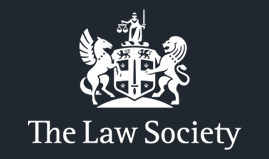The High Court case of Fiona Lorraine Philipp v Barclays Bank UK PLC was widely reported as a door shutting in the face of customers who have been victims of back transfer scams. However, headlines such as “Barclays ‘right’ not to pay out after a couple lose £700,000 in bank scam” does not mean that banks have no duty of care to victims of financial scams.
On closer inspection of the case, and the judgment of HHJ Russen QC, this case can be easily distinguished based on its very unusual set of circumstances. And, despite this claimant not getting the desired result, the judgement sets out the law in relation to the banks’ duty, which will assist victims, in future litigation, who feel their bank could have done more to protect them from fraud.
What happened in the Philipp case?
The claimant, Mrs Philipp, was the victim of an authorised push payment scam in March 2018, in which she lost £700,000. She made two international payments from her bank account after being deceived into believing that the money would be safe and that she was assisting an investigation by the Financial Conduct Authority and the National Crime Agency.
Her husband, Dr Philipp, was just as much a victim of this fraud because the money lost to the couple was part of a £950,000 investment, held with Tilney Financial Services (“Tilney”), which he had transferred to Mrs Philipp in order for her to make two payments of £400,000 and £300,000 to separate bank accounts in the United Arab Emirates.
In the proceedings, Mrs Philipp sought to hold the Bank accountable on the basis it had failed to comply with a suggested duty to protect her from the financially devastating consequences she subsequently faced. She says that had the bank questioned the transactions further, that could have stopped, or at least delayed the payments, giving her a better chance of recovering the money before it reached the fraudster. On this basis, Mrs Philipp said she has a claim for damages in respect of the £700,000 plus interest.
The Bank said that the claim was misconceived. It says that the alleged duty to protect Mrs Philipp from the consequences of the payments is not recognised in law, and should not be recognised, because it conflicts with the established duty upon a bank to comply with its customer’s mandate. The Bank also says that Mrs Philipp’s willingness to make the payments, despite being warned about the potential for fraud by the bank, the police and friends, is a reason why her claim must inevitably fail as a matter of causation.
The circumstances in this case were unusual and it is not a case that we would have litigated ourselves as we believe that there were sufficient waring given by numerous persons to Mrs Philipp to arouse her suspicions that it should have been fraud. However, we sympathise with her as this was a very sophisticated scam.
[expand title=”What is a “APP” payment?”]
The acronym “APP” stands for “authorised push payment”.
In its December 2016 Response to a Which? Super-complaint about “Consumer Safeguards in the Market for Push Payments”, submitted to it in September 2016, the Payment Services Regulator (“PSR”) said the following, which assists in identifying the characteristics of an APP fraud:
“2.2 Push payments are payments where a customer instructs their bank to transfer money from their account to someone else’s account. In contrast to push payments, pull payments are payments where the person who is due to receive the money instructs their bank to collect money from the payer’s bank.
2.3 Both push and pull payments can either be authorised or unauthorised. An authorised payment is one where the customer has given their consent for the payment to be made – and this can include situations where the customer has been tricked into giving that consent. An unauthorised payment is one made without the customer’s consent – for example, a payment made due to bank error or one made using a stolen payment card.”
The PSR’s Response said that push payments from one payment services provider (“PSP”) to another were typically made by a consumer using the Faster Payment Scheme, CHAPS or “On-Us payments” (where the payer’s PSP and the payee’s PSP are the same entity and internal systems are used). A later paper published by the PSR in February 2018 referred to APP fraud as being the second biggest type of fraud reported by UK Finance (the trade association for the UK banking and financial services sector) after card fraud. That paper was produced in anticipation of the banking industry developing a voluntary system for reimbursement for victims of APP fraud which became the Contingent Reimbursement Model Code for Authorised Push Payment Scams (“the CRM Code”). The CRM Code was introduced in late May 2019 which is over a year after the two payments in this case. In any event, the code does not extend to international payments.
On the PSR’s categorisation, the APP fraud in the present case involved a “malicious payee”, operating a scam, rather than payments “maliciously misdirected” where the payer thinks he is paying a legitimate payee (such as a trade supplier) but is tricked into paying some other account.
The PSR had treated the focus of the Which? Super-complaint as being upon fraud cases involving consumers in the UK transferring money between two UK bank accounts and the observation about the typical methods of payment was made in that context. In this case the international transfers made by Mrs Philipp to the bank accounts in the UAE were made using “BIPS Priority”, the Bank’s international payments system.
[/expand]
[expand title=”The legal issue in the Philipp’s case”]
The difference between the parties arises out of the following uncontroversial statement in Paget’s Law of Banking (15th ed) at para. 22.52:
“When executing the customer’s instruction to make a funds transfer the bank acts as its customer’s agent. Acting as agent the bank owes the customer a duty to observe reasonable care and skill in and about executing the customer’s orders. The duty arises both at common law and under statute.”
The authorities cited for the common law position include the decision of Steyn J in Barclays Bank plc v Quincecare Ltd [1992] 4 All ER 363. The basis of the statutory duty is section 13 of the Supply of Goods and Services Act 1982.
The Bank’s pleaded case recognised that it had a duty:
i) to act in accordance with Mrs Philipp’s mandate, and to execute reasonable care and skill in executing her instructions. Ms Knight said this duty is concerned with following the instructions (not transposing digits and so forth) and does not include a requirement to exercise a degree of care in deciding whether or not to execute an instruction which the mandate required Barclays to pay; and
ii) to execute the transfers unless an ordinary prudent banker would have had reasonable grounds for believing that the transactions were an attempt to misappropriate Mrs Philipp’s funds (i.e. what is now known as the Quincecare duty).
The claim (at paragraph 58) pleaded the Quincecare duty as “a duty to refrain from executing an order of Mrs Philipp if and for so long as it was put on inquiry, by having reasonable grounds for believing that the order was an attempt to misappropriate funds from Mrs Philipp.”
The difference between the parties as to the extent of protection afforded to a customer through a bank’s observance of the Quincecare duty is illustrated by me quoting in full paragraph 61 of the claim. The Bank denies that it was under a duty to have had in place the anti-APP fraud policies and procedures alleged by Mrs Philipp in that paragraph, where it is said:
“61. In the premises, in order to discharge its duties of reasonable skill and care as pleaded above, [the Bank] should have had the following policies and procedures in place by March 2018 which included:
(a) For the purpose of detecting potential APP fraud:
(i) Transactional data and customer behaviour analytics incorporating, where appropriate, the use of fraud data and typologies to identify payments that are at higher risk of being affected by an APP fraud;
(ii) Training employees on how to identify indicators of circumstances around and leading to transactions that are at higher risk of facilitating APP fraud;
(b) For the purpose of preventing potential APP fraud:
(i) Measures to identify people who were vulnerable to APP fraud;
(ii) Where an APP fraud or scam risk has been identified, reasonable steps to gather in further information in order to assess the risk, and provide their customers with impactful warnings, including additional measures whether the customer may be considered to be vulnerable;
(c) For the purpose of stopping potential APP fraud:
(i) Where there is or should be concern that a payment may be affected an APP fraud, take action to delay the payment while the matter is investigated;
(ii) Appropriate investigative steps include, where appropriate, seeking written confirmation as to the rationale for the transaction, including from any third party professionals involved, and invoking protocols which it is inferred are in place with the Police to enable further information to be gained from the Police, and investigating recent account activity; and
(d) For the purpose of stopping or reversing or reclaiming monies the subject of a potential APP fraud:
(i) Where there is or should be concern that a payment may be affected by an APP fraud, take action to delay the payment while the matter is investigated;
(ii) Communicating and/or writing to the recipient bank seeking assurances from them that monies will be held or frozen pending any review.”
In relation to the obligations upon the Bank, Ms Knight and Mr Sims QC each sought to draw very different conclusions from the decision of Steyn J in the Quincecare case.
What has become known as the Quincecare duty is encapsulated by what the judge said at p. 376:
“The law should not impose too burdensome an obligation on bankers, which hampers the effective transacting of banking business unnecessarily. On the other hand, the law should guard against the facilitation of fraud, and exact a reasonable standard of care in order to combat fraud and to protect bank customers and innocent third parties. To hold that a bank is only liable when it has displayed a lack of probity would be much too restrictive an approach. On the other hand, to impose liability whenever speculation might suggest dishonesty would impose wholly impractical standards on bankers. In my judgment the sensible compromise, which strikes a fair balance between competing considerations, is simply to say that a banker must refrain from executing an order if and for so long as the banker is “put on inquiry” in the sense that he has reasonable grounds (although not necessarily proof) for believing that the order is an attempt to misappropriate funds of the company (see proposition (3) in Lipkin Gorman v Karpnale Ltd (1986) [1992] 4 All ER 331 at 349. [1987] 1 WLR 987 at 1006). And the external standard of the likely perception of the ordinary prudent banker is the governing one.”
Steyn J delivered his judgment in Quincecare on 24 February 1988, referring to the then first instance decision of Alliott J in Lipkin Gorman. That decision was appealed to the Court of Appeal. The further appeal to the House of Lords in Lipkin Gorman did not concern the claim against the bank but only the claim against the defendant club – a casino – for money had and received. In the Court of Appeal, May LJ said he derived substantial assistance from the decision of Steyn J in Quincecare: see [1989] 1 W.L.R. 1340, at 1356. Addressing a bank’s principal obligation to honour cheques written in accordance with its customer’s mandate, May LJ expressed the opinion that a bank’s duty of care in such circumstances must be limited and said it was no part of the bank’s duty to consider the commercial wisdom or otherwise of the particular transaction. He referred to “exceptional circumstances” being required to qualify the bank’s obligation to honour any such cheque. After noting the defendant bank’s concession that there would be a duty to inquire before paying such a cheque where it knew of facts which a reasonable bank manager would think were probably dishonest, May LJ said:
“For my part I would hesitate to try to lay down any detailed rules in this context. In the simple case of a current account in credit the basic obligation on the banker is to pay his customer’s cheques in accordance with his mandate. Having in mind the vast numbers of cheques which are presented for payment every day in this country, whether over the bank counter or through the clearing bank, it is, in my opinion, only when the circumstances are such that any reasonable cashier would hesitate to authorise payment without inquiry, that a cheque should not be paid immediately on presentation and such inquiry made.”
The court in Lipkin Gorman addressed the duty of care upon a bank in the context of the drawing and payment of its customer’s cheques. The facts of Quincecare involved instructions for the transfer of monies being given firstly be telephone followed by confirmatory letter. I deal below with Ms Knight’s submission that each was concerned with a situation where a particular signatory on behalf of the customer had abused his authority in an attempted misappropriation of the customer’s funds for his own benefit. At this stage I simply note that these decisions upon the qualified extent of duty of care in the payment of cheques or acting upon oral or written instructions to transfer monies must in my judgment have equal force, at least, when a bank receives some other form of payment instruction on behalf of its customer.
Steyn J described the Quincecare duty as subordinate to the bank’s contractual duty to act upon a valid instruction. The same must be true where the customer’s instructions are given under modern and substantially automated bank payment methods. Ms Knight cited the decision of the Court of Appeal in Tidal Energy Ltd v Bank of Scotland Plc [2014] EWCA Civ 1107 [62]. That case concerned the extent of a bank’s obligations when processing a CHAPS payment request and the court made observations upon the critical importance of the speed of transaction and the need to lean against any construction of the contract which involved imposing a requirement on the bank which would frustrate the customer’s wish to have the money transferred within a given time frame. Although the court was addressing the position of the receiving bank, I accept Ms Knight’s point that the same principle should apply for the imposition of any duty of care on the sending bank. I also note that the Singularis case addressed next involved payments made following instructions received by SWIFT.
The parties also relied upon what had been said about the Quincecare duty by Lady Hale PSC (with whom all the Supreme Court Justices agreed) in Singularis Holdings Ltd (in liq) v Daiwa Capital Markets Europe Ltd [2019] UKSC 50; [2019] 3 WLR 997. The facts of Singularis involved the payment of monies out of a segregated client account with the defendant investment bank and broker. Lady Hale referred to the decision in Quincecare in saying, at [1]:
“…. it was an implied term of the contract between a bank and its customer that the bank would use reasonable skill and care in and about executing the customer’s orders; this was subject to the conflicting duty to execute those orders promptly so as to avoid causing financial loss to the customer; but there would be liability if the bank executed the order knowing it to be dishonestly given, or shut its eyes to the obvious fact of the dishonesty, or acted recklessly in failing to make such inquiries as an honest and reasonable man would make; and the bank should refrain from executing an order if and for so long as it was put on inquiry by having reasonable grounds for believing that the order was an attempt to misappropriate funds.”
Consistent with the defendant’s concession in the Court of Appeal in Lipkin Gorman and what Steyn J had been at pains to make clear, the judgment in Singularis therefore clarified that the operative standard of the ordinary prudent banker enables a claimant customer to hold a defendant bank to objective (or industry) standards of honesty. I note that Lady Hale in fact used language which is (or certainly was) familiar in constructive trust claims involving an allegation of knowing receipt or dishonest (or knowing) assistance and which precludes a defendant from resisting liability unless guilty of subjective dishonesty or, for present purposes, what Steyn J described as a “lack of probity” on the bank’s part. This is not surprising when, in identifying the duty, Steyn J referred to the third proposition accepted by Alliott J in Lipkin Gorman. In addressing and accepting all five propositions put to him in that earlier decision, Alliott J expressly noted he was doing so because the bank was alleged to have been guilty of knowing assistance and “[w]hen, as in this case, the alleged constructive trustee is a bank, the court’s approach must reflect the established contractual duties of a bank.”
In a section of her judgment headed “Causation” and addressing the defendant bank’s argument that its customer had inflicted the harm upon itself (because the fraud of its sole shareholder and only active director should be attributed to the company), Lady Hale commented on the purpose of the duty as follows, at [23]:
“…. the purpose of the Quincecare duty is to protect a bank’s customers from the harm caused by people for whom the customer is, one way or another, responsible.”
And later in her judgment (dealing with the argument that the fraudulent conduct of the director should be attributed to the company) she said, at [35]:
“The context of this case is the breach by the company’s investment bank and broker of its Quincecare duty of care towards the company. The purpose of that duty is to protect the company against just the sort of misappropriation of funds as took place here. By definition, this is done by a trusted agent of the company who is authorised to withdraw its money from the account.”
[/expand]
[expand title=”The Bank’s Argument”]
The Banks counsel Ms Knight argued that the Quincecare duty does not extend to a duty to protect Mrs Philipp against the consequences of her own decisions, where (as between herself and the Bank) her payment instructions were valid ones and not in and of themselves fraudulently given.
Ms Knight observed that the Quincecare duty has only been applied in cases where there was some doubt over the motives of a signatory acting on behalf of a corporate customer of the bank (or, in the case of Lipkin Gorman, a firm of solicitors whose mandate extended to the relevant signatory). In other words, the situation was one of attempted misappropriation of the customer’s funds by an agent of the customer where the instruction itself was fraudulent in nature. Ms Knight referred to the above-quoted passages from the judgment of Lady Hale in Singularis about the purpose of the duty. She said there is no reported case of it being applied to cases such as the present, where the transfer itself was properly and lawfully authorised by the customer herself and where the intended payee was the person misappropriating the funds.
In short, the Bank’s position is that the Quincecare duty does not extend to protect Mrs Philipp from her own actions. The extension suggested by Mrs Philipp so as to support the obligations alleged in paragraph 61 of the PoC would be anything but of the incremental kind that the courts are sometimes persuaded to recognise in the common law development of tortious duties.
In support of her submission that the Bank should not be made an insurer of last resort for fraud perpetrated against customers, by an extension of the Quincecare duty beyond the established cases of an agent’s misuse of his authority, Ms Knight pointed to the primary contractual duty of a bank to act upon its customer’s payment instruction by making the payment. She emphasised that any tortious duty of care will be framed by reference to that primary duty and that the decision in Quincecare showed that the circumstances in which a bank can deviate from its customer’s mandate are limited. She cited another passage from the judgment of Steyn J (at 376): “Ex hypothesi one is considering a case where the bank received a valid and proper order which it is prima facie bound to execute promptly on pain of incurring liability for consequential loss to the customer.”
Ms Knight also said it is fanciful for Mrs Philipp to suggest that, had the Bank asked further “safeguarding questions” in relation to the payments to Lambi and Bonito, that she would have divulged they were being made at the request of someone purporting to act on behalf of the FCA. The Bank points to Tilney being misinformed about the reason behind Dr Philipp’s withdrawal of the £950,000 and to the fact that Mrs Philipp was not even prepared to engage with the police when DC Claridge expressly raised concerns about her being a victim of fraud.
Ms Knight referred to Mrs Philipp’s conduct in her dealings with the Bank in submitting that it involved clear breaches of the Bank’s Terms and Conditions for Personal Customers of January 2018 (“the Bank’s T&Cs”). Mrs Philipp had disclosed her bank security details (or “payment tools”) to JW in breach of them. The Bank’s T&C’s also required the customer to let the bank know promptly if there was concern that account security had been compromised, stated that the Bank would never ask the customer to transfer money into an entirely new account, and further stated that “if someone persuades you to pay them money and you feel you’ve been cheated or should not have agreed to pay them, we are unlikely to be able to refund the money.”
Anticipating Mrs Philipp’s reliance upon the doctrine of undue influence in the banking context (see below) Ms Knight observed that the pleaded basis for Mrs Philipp’s case on this aspect was rather thin, possibly non-existent, as it was only in one paragraph in the Reply that the phrase “undue influence” had been used. That was in support of the suggestion that, where a bank is on notice of a person being potentially under fraud or undue influence, the same steps in recommending and ensuring that independent legal advice is taken should apply to the problem of APP fraud as for any transaction between customer and bank. Paragraph 63(b) of the PoC does allege that the Bank should have considered whether the scam warning should have been given in the presence of Mrs Philipp, without Dr Philipp present, and whether to recommend she should seek independent legal advice or attend a meeting with the police.
In any event, Ms Knight submitted that the principles of undue influence were of no relevance to a claim in damages against the Bank. They were concerned with the situation where a bank is itself a party to the impugned transaction or seeking to take some security in respect of it.
[/expand]
[expand title=”Mrs Philipp’s Argument”]
The submissions of Mr Sims QC on behalf of Mrs Philipp emphasised the following points which arose out of the parties’ pleaded cases:
i) the Bank’s admission of the duty to act with reasonable skill and care when acting upon Mrs Philipp’s payment instructions (subject to the Bank’s T&Cs); and
ii) the Bank’s admission of the Quincecare duty pleaded in paragraph 58 of the PoC “in so far as the test is whether an ordinary and reasonable banker would have had reasonable grounds for believing that the order was an attempt to misappropriate Mrs Philipp’s funds. It is denied, if it is alleged, that there was an absolute obligation, even in those circumstances not to execute the Transfers.” (per para. 49 of the Defence).
Mr Sims said the Bank’s position that the Quincecare duty only arose in circumstances of attempted misappropriation of the customer’s funds by an agent of the customer (rather than by a third party perpetrating a fraud on the customer which induces the payment) did not clearly emerge in the Defence as a qualification to the Bank’s admission of the Quincecare duty.
However, I note the Defence (at paragraph 4) does make clear the Bank’s position in denying that “it had any obligation to protect Mrs Philipp from her own actions” and that it is “not an insurer of last resort for fraud perpetrated against customers.” When coupled with the denial (at paragraphs 4(a)-(b) and 48 of the Defence) that the Bank would be in breach of duty in executing the order of Mrs Philipp without having made such inquiries as an honest and reasonable man would make, or to consider the commercial wisdom or otherwise of Mrs Philipp’s instruction, I think it can be said that the Bank’s pleading does indeed seek to contain the Quincecare duty within the bounds suggested by Ms Knight.
Mrs Philipp’s case proceeds on the assumption that the duty is not so confined and that the Bank’s contrary position meant that the Quincecare duty owed to her was really non-existent.
Mr Sims QC illustrated his client’s position with a Venn diagram. This encapsulated his client’s position that the Quincecare duty should be regarded as one element of the wider duty of reasonable skill and care owed by a bank as a PSP. Moreover, the Quincecare duty was triggered by reasonable grounds for suspecting fraud and, for these purposes, no distinction should be drawn between misuse of authority (as in Quincecare, Lipkin Gorman and Singularis), money laundering or APP fraud. Mr Sims said that second point held good even of the Quincecare duty was treated as falling outside the wider “set” of a common law duty requiring the exercise of reasonable skill and care.
On this basis, Mr Sims QC submitted that real dispute was as to the standard of care and the court could not in the circumstances properly reach a conclusion on that standard on an application for summary judgment. He said the Bank had (in Ms Stothard’s evidence) failed to address the question which the application begged, namely the standards which the Bank should have observed for the purpose of any trigger of a reasonable belief that the transfers were an attempt to misappropriate Mrs Philipp’s monies, and that meant that its application must fail. That must follow, he said, before one even begins to consider the impact that expert evidence of the kind contained in Mr Brigden’s report might have at the trial.
Challenging the Bank’s reliance upon the seventh proposition in Easyair (see paragraph 22 above) Mr Sims QC submitted that the Bank’s own analysis of the Quincecare duty, and the suggested limitations upon it, meant that the case raised consideration of novel points of law. I have already noted his submission that determination of these points would benefit from detailed argument and mature consideration following findings of fact.
He also said that, similarly, the Bank’s position on causation proceeded on the flawed basis that the issue involved no real or substantial disputes of fact when, on the contrary, a decision as to the cause of his client’s loss would require evidence (potentially including expert opinion) as to what the Bank should have done, what Mrs Philipp would have done in response (including her on-the-spot reactions) and what, objectively, should in turn then have been the Bank’s own responsive reactions. He also submitted that the Bank had also overlooked consideration of Mrs Philipp’s secondary and alternative case on causation, including a loss of a chance of her recovering the monies on the basis that the Bank should have taken steps to halt payment out by the receiving banks in the UAE at an earlier point in time than 31 May 2018 (most obviously 16 March 2018 when DS Billam contacted the Bank).
These arguments on behalf of Mrs Philipp chime with the third, fifth and sixth propositions in Easyair (see paragraph 23 above).
Mr Sims QC countered Ms Knight’s point about a bank’s potential exposure for consequential losses if it failed to act promptly on a payment instruction by citing a passage in Paget (at para. 22.51) for the proposition that the bank will only be held liable in such circumstances if it has acted negligently. A later passage in the textbook (at para. 22.54) referred to a bank not being held liable in respect of a fraud upon the customer if it had followed established banking practice in making the relevant payment. The authority of Tidal Energy is cited in Paget in support of that proposition but, in my judgment, it is important to note that the case concerned the standards to be observed by a bank in acting upon and implementing a CHAPS payment. Again, therefore, one comes back to the question of whether or not there existed relevant banking standards in relation to APP fraud which can be brought within the scope of the Quincecare duty and which, if observed, would have led to the payment instruction given by the customer not being implemented by the Bank or at least not being implemented as quickly as instructed.
Mr Sims relied on the CRM Code (effective from 28 May 2019 for domestic payments) when addressing above the preliminary dispute at the hearing about the present status and significance of the Brigden Report. This included the Which? Super-complaint of September 2016; the PSR’s Response of December 2016; a press release by UK Finance in February 2017 about the scale of APP frauds and action being taken by the banking industry to combat it; and the PSR’s Consultation Paper (CP 17/2) of November 2017. He noted that the Bank had been consulted by the PSR before its Response in December 2016. Reference was also made to a “Dear CEO” letter 31 January 2018 written by Mr Andrew Bailey, then Chief Executive of the FCA, to chief executives of PSP’s.
Mr Sims said these published documents demonstrated that, by the time of the payments in issue in these proceedings, APP fraud was a recognised problem for banks and their customers. He said that the “Dear CEO” letter (referred to in paragraph 60 of the PoC) really marked the end of the story. With its focus upon tackling APP fraud within the context of the FCA’s Senior Managers and Certification Regime, the letter asked PSPs to consider whether their senior managers were ensuring that adequate steps were being taken to address APP fraud.
In looking at various passages in the published material available to the Bank by March 2018, the submissions on behalf of Mrs Philipp focussed upon their references to the reasonably extensive measures that sending PSPs had developed to prevent customers falling victim to APP fraud and in assisting them in attempting to recover funds (eg. para. 1.11 of the PSR’s Response of December 2016) and to the anti-money laundering requirements under the then Money Laundering Regulations 2007 (eg. at para. 12.13 of that Response). Mr Sims said that the steps which Banks were required to take to combat money laundering (including due diligence checks for “occasional transactions” worth £15,000 or more) showed that the Bank should have exercised greater caution in relation to the payments to Lambi and Bonito than (it is to be assumed on the present application) it in fact did. He also referred to what was later said in the CRM Code (at para. 1(5) of “SF (i.e. Standards for Firms) that: “[w]here a Firm has sufficient concern that a payment maybe an APP scam, it should take appropriate action to delay the payment while it investigates.”
I remarked at the hearing that the PSR, as the regulator, appeared to be proceeding on the assumption that the duties owed by a bank at common law did not provide adequate protection to a customer who falls victim to an APP fraud. In particular, section 4 of the PSR’s Response of December 2016 stated that “PSPs are not liable for APP scams since APPs are payments that the customer has authorised (that is, the customers have given their consent for the payments for the purposes of the Payment Services Regulations 2009).” The section went on to list four legal and regulatory obligations upon PSPs, the last of which was “under common law, a PSP is obliged not to exercise a payment instruction where it is on notice that its customer’s agent is attempting to misappropriate funds” (see also paragraph 12.18 where Quincecare and Lipkin Gorman were cited in support of that proposition). The PSR therefore appeared to be endorsing the narrower scope of the Quincecare duty advocated by the Bank.
The same can be said about the trade association’s press release of February 2017. It stated that “[i]f a customer authorises the payment themselves, current legislation means that they have no legal protection to cover them for losses – unlike other financial frauds where the criminal makes a payment without the customer’s consent.”
Mr Sims QC countered my observation by relying upon the decision of the Court of Appeal in Gorham v British Telecommunications Plc [2000] 1 W.L.R 2129, 2141E-F, where the court said that silence within a detailed regulatory code, upon the existence or otherwise of the duty alleged by the claimant, “does not exclude the power of the court to consider whether a duty of care exists.” I recognise and accept the force of that, though it raises the question as to whether the duty has already been established by earlier authority (as the court in that case found by reference to the principle in White v Jones) or, if not, whether it can be established through a process of appropriate incremental development of the common law by reference to circumstances not addressed in earlier cases.
Mr Sims QC pointed to what he described as the following “red flags” in relation to Mrs Philipp’s payments to Lambi and Bonito which were sufficient to put the Bank on inquiry in relation to a suspected fraud:
i) the routing of the payments through the Account (of Mrs Philipp) when the £950,000 had come from Dr Philipp and, in relation to the payment to Lambi, that he (as a third party to the banker-customer relationship) had volunteered the information about previous dealings with that payee;
ii) the speed of the transaction relative to the recent substantial crediting of £950,000 to the account;
iii) the sums of money involved when compared with the routine credits and debits to the Account which reflected Mrs Philipp’s modest income and lifestyle;
iv) the fact that Lambi and Bonito were new payees with whom Mrs Philipp’s bank records revealed no connection; and
v) the use by Mrs Philipp of branches that were not local to her address.
I note that these suggested red flags resonate with the type of safeguarding questions which Mrs Philipp says (at paragraph 27 of the PoC) she ought to have been asked on her visits to the Bank but, she says, were not asked.
Mr Sims QC also submitted that an analogous basis for the case advanced in paragraph 61 of the PoC lay in the approach of the courts to the principles of undue influence and constructive notice in the context of banking transactions. To quote from paragraph 98 of his skeleton argument:
“Transactions induced by undue influence may be set aside in circumstances where the bank is on constructive notice of such undue influence. This may lead to nothing more than a restatement of the Quincecare duty, as already articulated above. But this is nevertheless illuminating, since it shows the Bank cannot always simply state it has to follow the instructions of the customer, and there may be certain circumstances, where it is put on notice of fraud or undue influence, where it may be required to take further steps in order to free itself from notice.”
He went on to refer to Royal Bank of Scotland plc v Etridge (No 2) [2002] 2 AC 773 for the proposition that, in the context of a husband and wife relationship, where it is established that the wife reposed trust and confidence in the husband in relation to their financial affairs and the contemplated transaction is one which “calls for an explanation”, then there is a presumption in favour of the transaction having been procured by undue influence. A bank will be put on inquiry by a combination of two things: a non-commercial relationship and a transaction which on its face is to the disadvantage of the wife. Mr Sims had particularly in mind that JW’s fraud was one which operated most directly upon Dr Philipp, as most of the telephone conversations took place between them, and it was Dr Philipp’s mobile phone which provided the means for JW to listen in to the instructions given at the Bank’s branches. He referred to the judgment of Lord Nicholls in Etridge, at [50], who said a bank could take steps to avoid being fixed with constructive notice, and will satisfy the requirements as to reasonable steps to take in that respect, if it insists that the wife attend a private meeting with a representative of the bank (away from the husband) at which she is told of the extent of her liability, is warned of the risk she is running and is urged to take independent legal advice.
This reliance upon the doctrine of undue influence in the banking context was given less prominence in Mr Sims’ oral submissions.
[/expand]
[expand title=”Decision”]
Ultimately the court advised: “One cannot reasonably feel anything other than acute sympathy for Mrs and Dr Philipp who have fallen victim to the dishonesty of JW and any of his partners in crime. They have lost a very significant part of their personal savings to the fraudster.
However, it would not be fair, just or reasonable to impose liability on the part of the Bank in respect of the APP fraud perpetrated upon Mrs Philipp. For the reasons expressed above, such liability could only rest upon what I regard to be an unprincipled and impermissible extension of the Quincecare duty.
I therefore grant the application and propose to enter summary judgment in favour of the Bank.”
[/expand]
Conclusion
On the facts of the case it would have been unjust to find a Quincecare duty as the Philips’ were hell bent on making the payments irrespective of the bank’s advise. They were ‘under the spell’ of the fraudster. This is an unusual case as the average person if advised by the bank or police that the payment was to a fraudster would stop the payment and not make further payments. Usually a victim of a scammer or fraudster believes that it is genuine 100% and are given no warning by the bank about potential fraud when making payments, despite the banks having sophisticated information about fraudsters and types of fraud. This case also concerned a foreign transaction so the banks rules on fraud checks for payments do not apply. They only apply to domestic transfers. If you have been a victim of fraud, then we are experts at recovering money from the banks or fraudsters directly through tracing and freezing injections.













